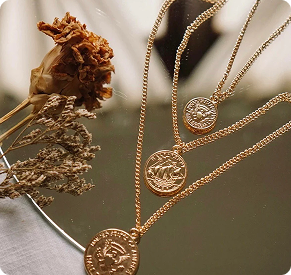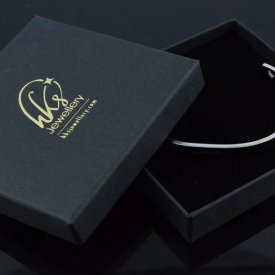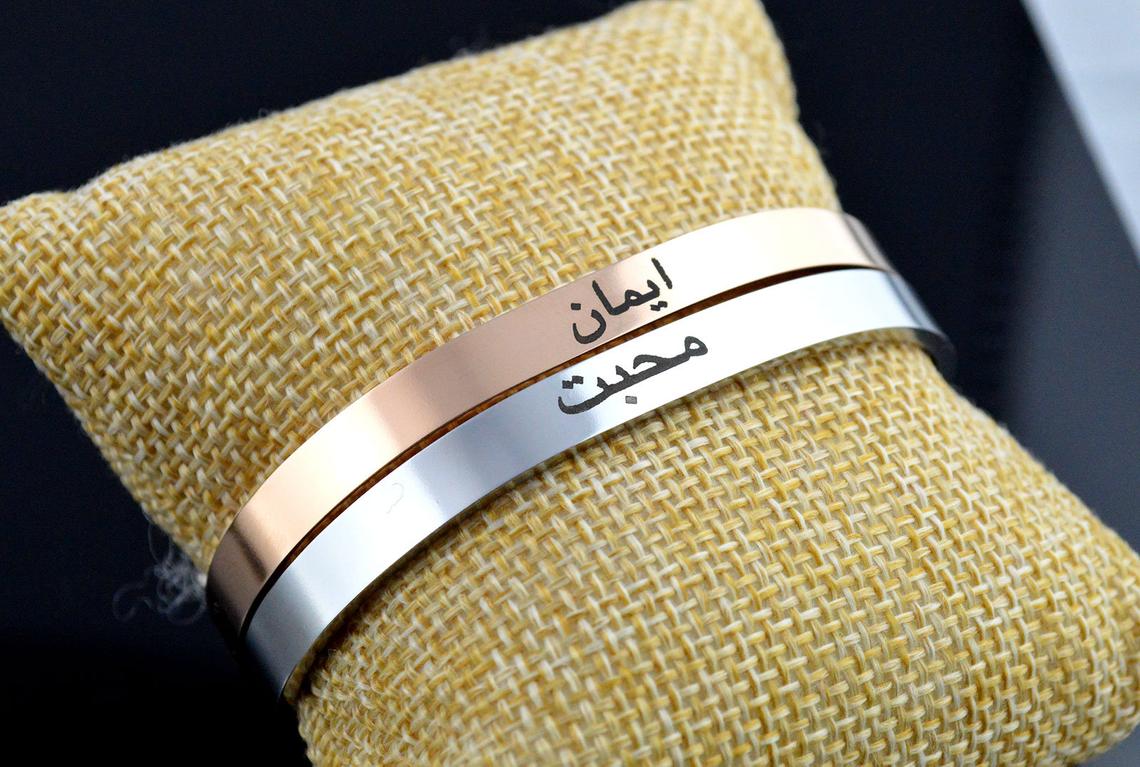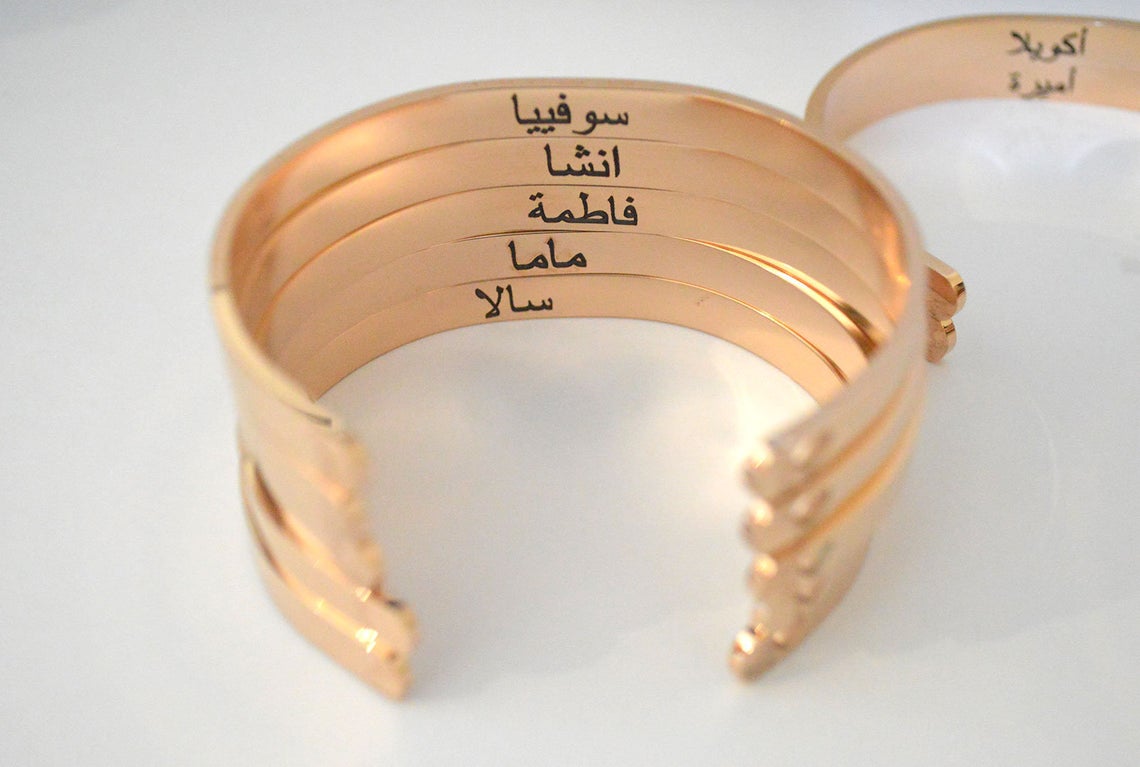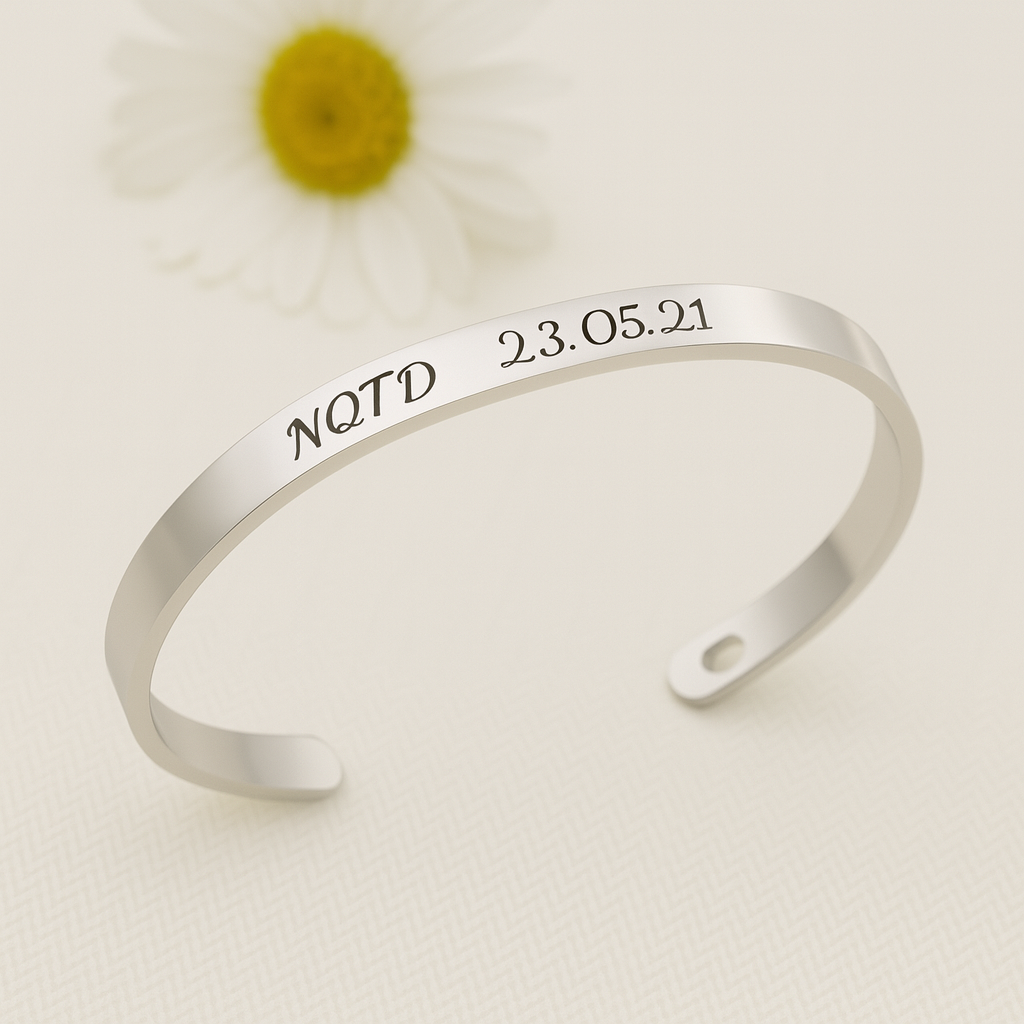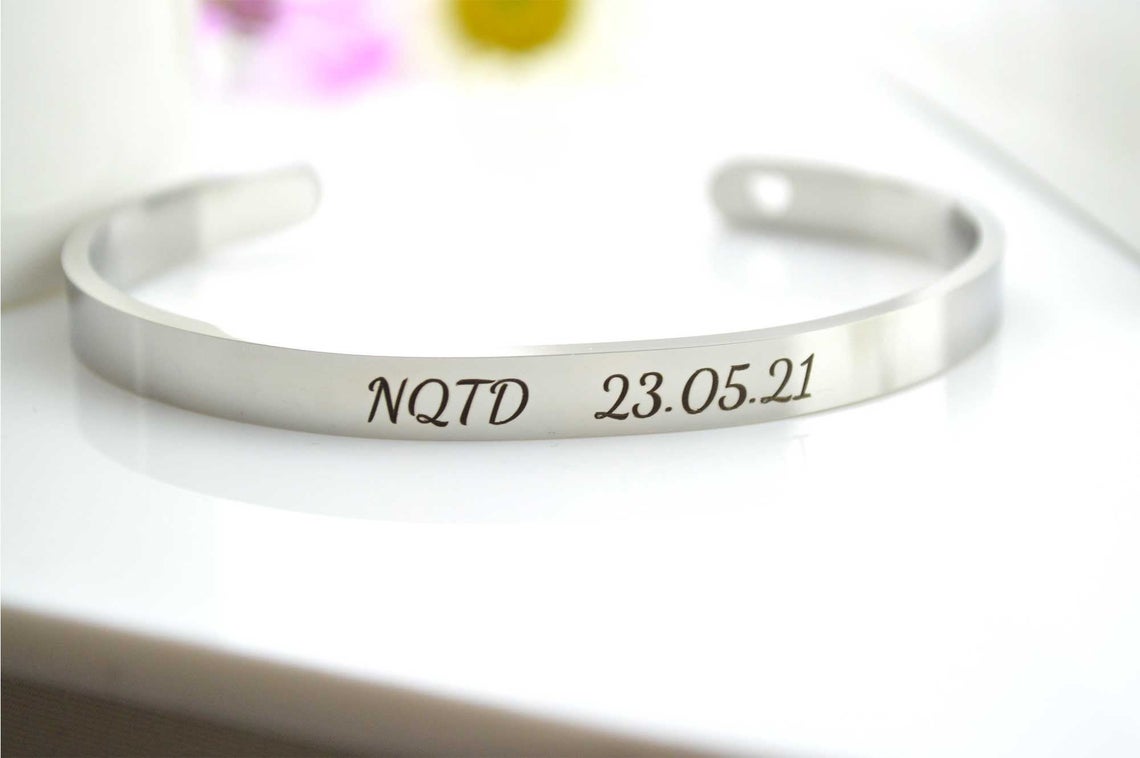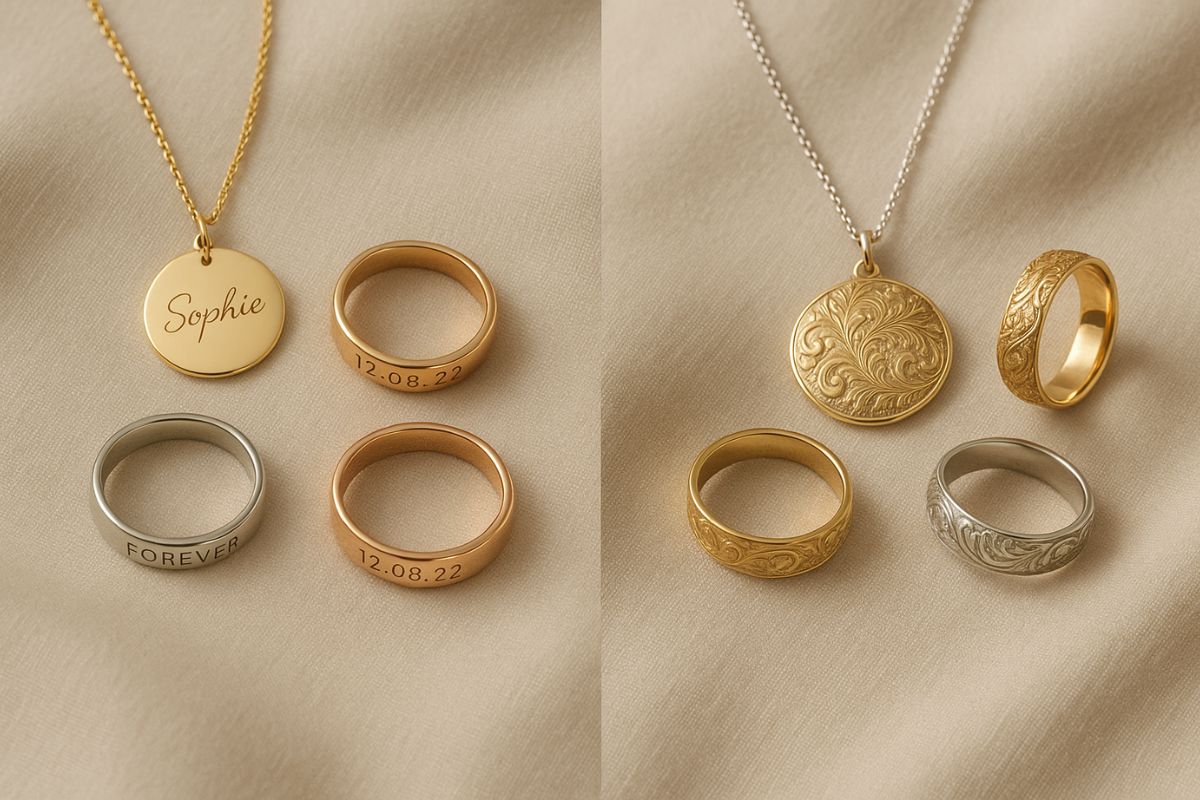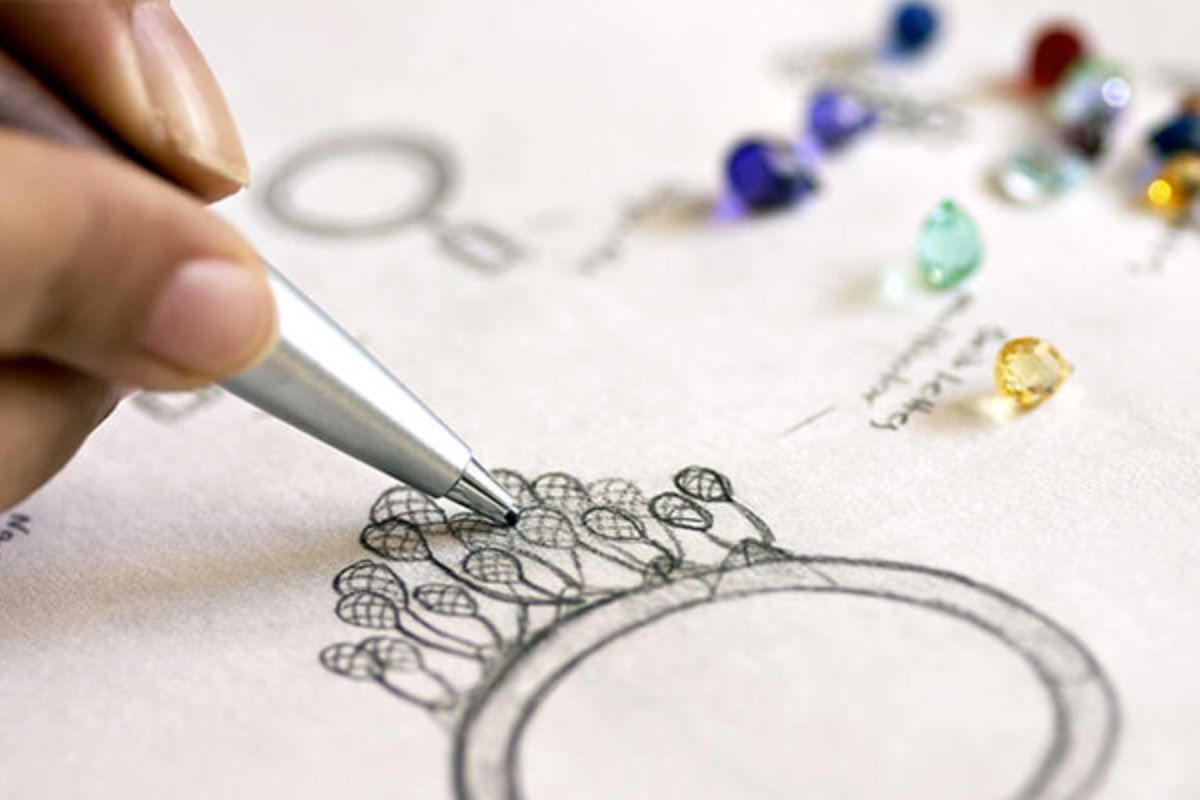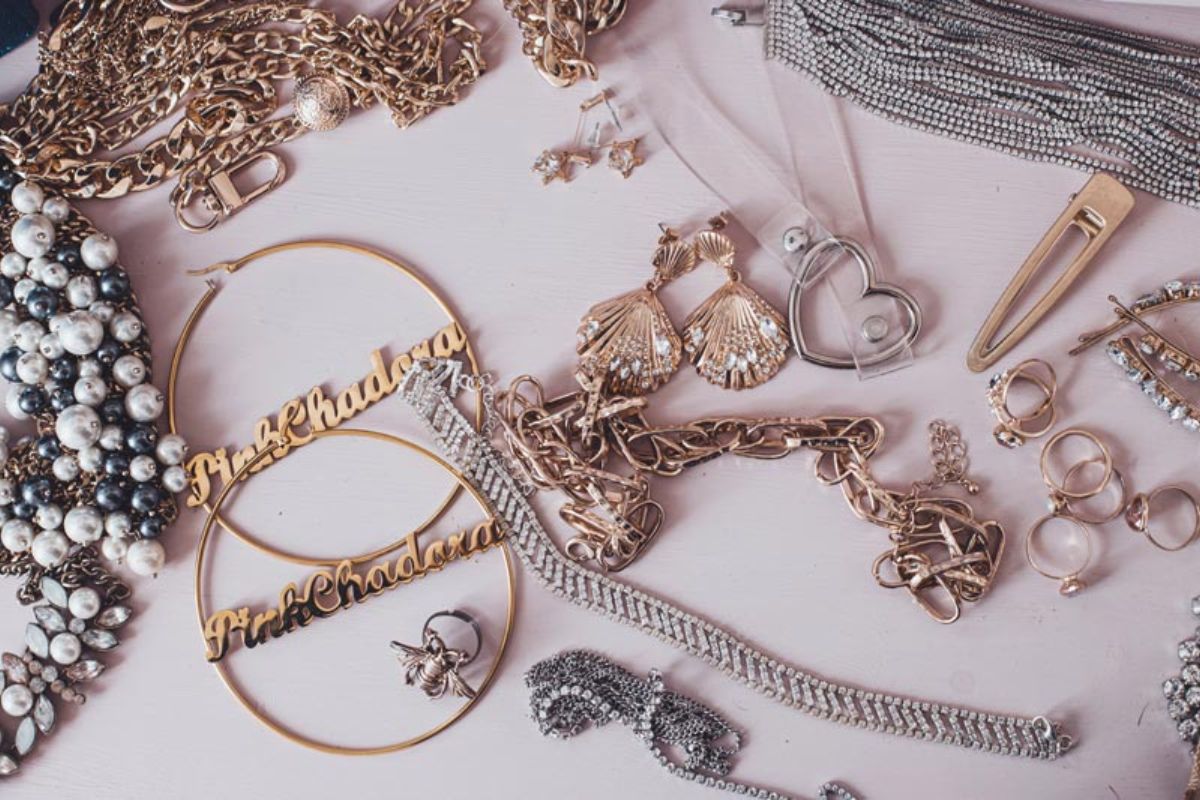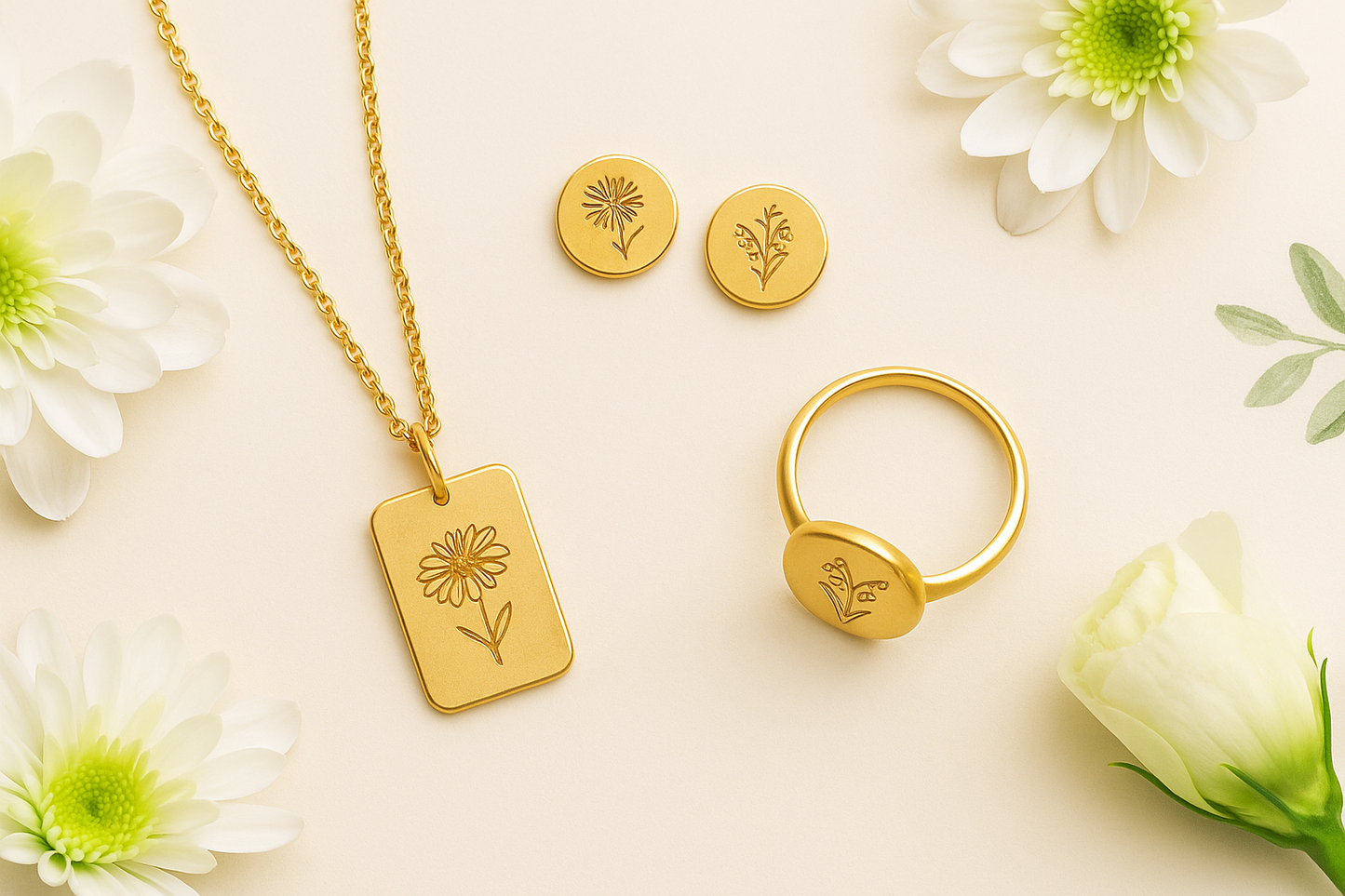
Ever wonder which flower symbolises the month of your birth? Your birth flower has equally potent symbolism and beauty that can be incorporated into meaningful jewellery pieces, just as you might wear your birthstone with pride. Every month of the year is endowed with particular flowers that capture the essence of the season and represent the attributes cherished in people born in that period.
This thorough guide will walk you through the fascinating world of birth flowers and their profound meanings, whether you're looking for ideas for a personalised jewellery piece or are just inquisitive about your floral connection.
Birth Flowers: What Are They?
Similar to your birthstone, your birth flower is a particular bloom that is customarily connected to your birth month. Since ancient times, these floral symbols have been used to symbolise character attributes, express feelings, and honour the inherent beauty of every season. The custom is based on:
Victorian Language of Flowers (Floriography): The intricate system of flower symbolism used during the Victorian era to convey particular feelings and messages.
- Ancient Mythology and Folklore: Legends that have been passed down through the ages that give various flowers magical qualities and significance
- Seasonal Blooming Patterns: For millennia, human celebrations and agricultural practices have been guided by natural flowering cycles.
- Religious and Cultural Traditions: For a very long time, different cultures have connected particular flowers to festivals, months, and life events.
Your birth flower provides a very personal way to use nature's artistic ability to express who you are in contemporary jewellery design, resulting in pieces that tell your own story.
Your Birth Flower Calendar
| Month | Primary Flower | Alternate Flower | Key Meanings |
|---|---|---|---|
| January | Carnation | Snowdrop | Love, Hope, New Beginnings |
| February | Violet | Primrose | Faithfulness, Young Love |
| March | Daffodil | Jonquil | Rebirth, Renewal, Hope |
| April | Daisy | Sweet Pea | Innocence, Gratitude |
| May | Lily of the Valley | Hawthorn | Happiness, Protection |
| June | Rose | Honeysuckle | Love, Devoted Affection |
| July | Larkspur | Water Lily | Positivity, Enlightenment |
| August | Gladiolus | Poppy | Strength, Imagination |
| September | Aster | Morning Glory | Wisdom, Daily Renewal |
| October | Marigold | Cosmos | Creativity, Harmony |
| November | Chrysanthemum | Peony | Joy, Honor |
| December | Narcissus | Holly | Hope, Protection |

Your Complete Guide to Birth Flowers
January: Snowdrops and carnations are your flowers.
Carnation if you were born in January
The carnation, your primary birth flower, symbolises your capacity to be warm and loving even in the most chilly times. Since ancient times, carnations have been prized for their unique frilly, ruffled petals and delightful clove-like scent.
- Colour Meanings: Red carnations symbolise intense romantic love; pink expresses appreciation and admiration; and white symbolises your good intentions and the luck you bestow upon others.
- Historical Connection: Carnations were used in ceremonial crowns by the ancient Romans, who revered them, which may account for your innate leadership abilities and distinguished demeanour.
- Personality Qualities: You have exceptional resilience and the capacity to make people smile in trying circumstances, much like the resilient carnation that blooms throughout the winter.
Snowdrop is your substitute flower.
The delicate snowdrop, your secondary birth flower, represents your function as a messenger of hope and fresh starts.
- Symbolic Meaning: Just as snowdrops are the first flowers to appear through winter snow, you're frequently the first to recognise potential in difficult circumstances.
- Cultural Significance: According to British folklore, you are a symbol of bravery and rebirth, which makes you an innate trailblazer who encourages others to start over.
February: Primroses and violets are your flowers.
Violet, if you were born in February
Your humble yet profoundly significant birth flower symbolises your ability to be dependable and devoted.
- Romantic Connection: During the Victorian era, your flower was the quintessential representation of passionate love, implying that you build enduring bonds.
- Useful Applications: You make people around you happier and healthier, much like violet petals have been candied and added to teas for centuries.
- Hidden Depths: Just like your subtle yet significant influence on others, your flower, despite its modest appearance, has potent symbolism and useful applications.
Primrose is your alternate flower.
The happy primrose, which translates to "first rose," is a symbol of your renewed vitality and positive attitude.
- Celtic Heritage: Legend has it that wherever you go, you draw good fortune and kind spirits.
- Timing: You frequently show up when people most need encouragement and hope, much like a late-winter primrose.
March: Jonquil and daffodils are your flowers.
Daffodil if you were born in March
Like spring itself, your golden trumpet blooms herald your arrival, establishing you as a natural symbol of rebirth and constructive transformation.
- National Significance: In Wales, where daffodils are national symbols, seeing the first bloom is extremely lucky, indicating that others are as fortunate to be in your presence.
- Symbolic Power: Your recovery from the dormancy of winter reflects your capacity to bounce back from setbacks with newfound vigour and determination.
- Good Fortune Tradition: Legend has it that you should never be given a single daffodil because it could portend bad luck, emphasising your sense of community.
The Jonquil is your substitute flower.
Your March identity gains layers of sweetness and desire from your fragrant jonquil variety.
- Romantic Legend: According to long-standing customs, brides who carry your flower will guarantee happy, long-lasting marriages.
- Sensory Impact: People are drawn to you by your strong, sweet scent, which makes for pleasant, memorable experiences.
April: Sweet Pea and Daisy are your flowers.
Daisy, if you were born in April
The name of your birth flower, which translates to "day's eye," represents your innate synchronisation with life's everyday cycles and your youthful, upbeat perspective.
- Childhood Bond: You continue to approach life's complexities with a light-hearted, innocent demeanour, much like the daisy chains and "loves me, loves me not" games.
- Celtic Legend: According to old tales, God scatters daisies to console bereaved parents, implying that you are a natural comforter and joyous person.
- Loyalty Symbol: Giving your flower conveyed the Victorian flower language "I share your sentiment," demonstrating your capacity for empathy.
The Sweet Pea is your substitute flower.
Your graceful, grateful disposition is symbolised by your delicate climbing flower with petals that resemble butterflies.
- Social Grace: According to Victorian custom, your flower is the ideal thank-you present since it conveys your innate ability to show appreciation and make other people's days enjoyable.
- Fragrant Impact: Your flower's potent honey-like scent reflects your capacity to make a delightful, enduring impression on everyone you encounter.
May: Hawthorn and Lily of the Valley are your flowers.
Lily of the Valley: If You Were Born in May
With its tiny white bells and divine scent, your beautiful birth flower represents your capacity to bring joy back into any circumstance.
- French Tradition: Giving flowers on May 1st for good luck implies that you are a born bringer of happiness and good fortune.
- Royal Connection: Often seen in royal wedding bouquets, such as Kate Middleton's, your flower symbolises the joy and harmony you bring to marriages and relationships.
- Warning Aspect: Your flower is poisonous if consumed, despite its beauty. This may be a reflection of your kind demeanour, which hides your inner strength and your need for respect from others.
Hawthorn is your substitute flower.
When the holy hawthorn tree blooms abundantly during your birth month, it links you to long-standing fertility and protection customs.
- May Day Heritage: You are a person who naturally unites communities in joyous celebration because of the central role your flower plays in Celtic Beltane celebrations.
- Protective Nature: Hawthorn is said to be a guardian against evil spirits in folklore, implying that you are inherently protective of the people you love.
June: Honeysuckle and roses are your flowers.
Rose: If You Were Born in June
Your birth flower, the national flower of England and the quintessential representation of love, captures your inherently loving, passionate, and warm personality.
- Colour Language: You can use rose colours to convey a variety of emotions: yellow for friendship, pink for gratitude, white for purity, and red for passionate love.
- Peak Season: You are the pinnacle of beauty and emotional expression, blooming in early summer when gardens are at their best.
- Cultural Impact: Throughout history, your flower has influenced poetry, art, and romance, indicating that you inherently motivate people and make an impression.
Honeysuckle is your substitute flower.
The sweet ties of devotion you form with other people are symbolised by your climbing honeysuckle.
- Evening Magic: It releases its most potent scent at dusk to draw in night pollinators, and you may discover that your most enchanted moments occur in private, quiet spaces.
- Protective Folklore: Traditionally placed by doors to ward off bad luck and draw good fortune, you inherently make places that are welcoming and safe for others.
July: Water lily and larkspur are your flowers.
Larkspur: If You Were Born in July
Your striking, tall birth flower symbolises your innately upbeat, giving nature and your capacity to make people feel better.
- Upward Growth: You inherently encourage others to set higher goals and keep a positive attitude, much like larkspur spikes reaching for the sky.
- Colour Variety: With hues of blue, purple, pink, and white at your disposal, you can modify your expression to fit various contexts while keeping your essential positive vibe.
- Ancient Protection: Legend has it that your flower protected people from evil spirits and scorpion stings.
The Water Lily is your substitute flower.
Your calm water lily symbolises your capacity to remain gracious and pure in the face of adversity.
- Resilience Symbol: You demonstrate to others how to maintain your integrity in the face of adversity by emerging from murky depths to bloom flawlessly on the outside.
- Eastern Wisdom: Your flower symbolises that you have profound inner wisdom and spiritual insight, which is linked to enlightenment in many cultures.
August: Gladiolus and poppies are your flowers.
Gladiolus: If You Were Born in August
Your sword-like birth flower symbolises your inherent strength of honour, integrity, and character.
- Warrior Heritage: Roman gladiators wore your flower to symbolise protection and victory, indicating that you are brave and capable of overcoming obstacles.
- Moral Compass: According to Victorian symbolism, your flower represents unwavering integrity, meaning you instinctively defend the moral high ground.
- Passionate Expression: The meaning of your flower, "you pierce my heart," implies that you develop deep, meaningful relationships with other people.
The poppy is your substitute flower.
Your resilient yet delicate poppy symbolises your capacity for creativity and for finding beauty even in the most trying situations.
- Creative Spirit: Your flower, which is connected to dreams and imagination, indicates that you have a strong capacity for creativity and forward-thinking ideas.
- Memorial Significance: The red poppy's symbolic representation of fallen soldiers suggests that you inherently respect and remember those who have given their lives.
September: Morning glory and asters are your flowers.
Aster, if you were born in September
Your birth flower's star shape symbolises your sage, devoted personality and your capacity to offer direction when people most need it.
- Celestial Connection: According to Greek mythology, your flower was formed from a goddess' tears, bringing starlight to the earth. This suggests that you naturally brighten people's dark circumstances.
- Seasonal Timing: As summer comes to an end, you bloom, symbolising the beauty of maturity and the wisdom gained from experience.
- Trust Symbol: The Victorian phrase "I trust you" denotes that people inevitably confide in and seek your advice.
Morning Glory is your substitute flower.
Your ability to find renewal and new insights every day is symbolised by your daily-blooming flower.
- Ephemeral Beauty: Every flower that lasts only a day serves as a reminder to treasure the present and to help others recognise the fleeting, priceless experiences of life.
- Dawn Connection: As the sun rises, you inherently infuse every circumstance with new vitality and optimism.
October: Cosmos and marigolds are your flowers.
Marigold: If You Were Born in October
Your birth flower's warm hue symbolises your creative, passionate personality and your capacity to cheer people up despite the passing of the seasons.
- Golden Heritage: Often referred to as "Mary's gold," your flower links you to ideas of prosperity and divine blessing.
- Resilience: You exhibit incredible fortitude and the capacity to remain beautiful under trying circumstances by blooming until frost.
- Cultural Significance: During Mexican Day of the Dead celebrations, your flower symbolises your ability to gracefully assist others in navigating life's changes.
Cosmos is your substitute flower.
Your harmonious and serene nature is symbolised by your exquisitely balanced flower.
- Divine Order: Your flower's name, which comes from the Greek word for harmony, implies that you restore harmony and order to chaotic circumstances.
- Modest Beauty: The universe produces breathtaking displays despite their basic appearance, much like your subtle yet potently uplifting influence.
November: Peonies and chrysanthemums are your flowers.
If You Were Born in November: Chrysanthemum
Even in the darkest times of life, your resilient birth flower symbolises your capacity to spread happiness and hope.
- Friendship Symbol: In Eastern cultures, your flower is a symbol of friendship and good vibes, signifying your innate capacity to establish and preserve deep connections.
- Longevity Meaning: Linked to longevity and contentment, your presence often results in long-lasting, constructive improvements in the lives of others.
- Seasonal Defiance: You exhibit incredible fortitude and the capacity to find beauty in any situation by blossoming in spite of the cold.
The peony is your substitute flower.
Peonies, your alternate flower, symbolise your noble character and rich emotional life, even though they are usually spring bloomers.
- Royal Nature: Known as the "queen of flowers," your alternate bloom conveys an air of natural dignity and dominating presence.
- Healing Heritage: Your flower, which bears the name of Paeon, the gods' physician, links you to ideas of healing and assisting others.
December: Holly and Narcissus are your flowers.
Narcissus (Paperwhite): If You Were Born in December
Your birth flower's winter bloom symbolises your capacity to provide light and hope to people in their hour of greatest need.
- Renewal Symbol: You inherently offer hope and the promise of better times to come when you bloom indoors during the depths of winter.
- New Year Connection: Your presence usually signifies positive new beginnings for others and is linked to good fortune for the upcoming year.
- Fragrant Impact: Your influence endures long after you've moved on, and the potent scent of paperwhites guarantees that you'll never be forgotten.
Holly is your substitute flower.
Your evergreen holly symbolises your unwavering fortitude and giving nature.
- Protective Nature: According to ancient customs, your plant acts as a protector against evil forces, implying that you inherently shield and protect those you love.
- Holiday Joy: An essential part of Christmas festivities, you infuse any get-together with cosiness, custom, and a festive vibe.
- Eternal Aspect: You embody the timeless traits that endure through life's trying times, remaining vibrant throughout the winter.
Using the Flower of Your Birth in Jewellery
Knowing your birth flower opens up wonderful possibilities for making personalised, meaningful jewellery that expresses your individuality.
Ideas for Design Inspiration
- Detailed Engravings: The complex shape of your flower can be exquisitely engraved to create delicate yet significant details on bracelets, pendants, and rings.
- Three-Dimensional Sculptures: Talented craftspeople can use precious metals to capture the inherent beauty of your flower, producing wearable art that honours the month of your birth.
- Gemstone Colour Matching: You can use coloured stones to symbolise the natural colours of your flowers, such as sapphires for blue morning glory, rubies for red roses, and emeralds for green leaves.
- Mixed Media Techniques: You can replicate the exact colour of your birth flower by combining enamel work with precious metals.
Common Uses for Jewellery
- Birth Flower Necklaces: These necklaces, which feature your flower as the main pendant, are effective conversation starters and personal statements.
- Family Garden Rings: Several bands featuring the birth flowers of various family members make heartfelt stacking sets that honour your relationships.
- Charm Collections: Creating a bracelet with a loved one's birth flowers results in a wearable family tree that expands over time.
- Seasonal Earrings: Your birth flower can be interpreted in different scales to fit your personal style preferences, ranging from delicate studs to dramatic dangles.
Selecting the Ideal Birth Flower Jewellery
Take into account these crucial elements when choosing jewellery that is inspired by your birth flower:
Individual Resonance
- Life Stage Relevance: Think about how your flower's symbolism relates to your present situation and your goals for the future.
- Emotional Response: Pick designs that truly move you and feel like genuine expressions of who you are.
Aspects of Design
- Wearability: Think about your lifestyle and how frequently you'll wear the piece when choosing between delicate and robust designs.
- Versatility: If you want maximum wearability, look for pieces that go well with both formal and casual attire.
- Style Preference: Choose between minimalist interpretations that hint at your flower versus detailed botanical reproductions.
Technical Features
- Gemstone Integration: Think about combining your birthstone with your birth flower for double personal significance.
- Metal Selection: Select gold, silver, or platinum according to your skin tone, current jewellery collection, and durability requirements.
- Craftsmanship Quality: Invest in well-made pieces that will maintain the delicate details of your flower over time.
How to Take Care of Your Birth Flower Jewellery
You must pay close attention to your floral-inspired jewelry's special qualities in order to preserve its beauty:
Upkeep and Cleaning
- Professional Services: Arrange for routine examinations with certified jewellers who are aware of the unique requirements of intricate botanical designs.
- Gentle Approach: Use gentle brushes and mild cleaning solutions to preserve delicate three-dimensional elements and intricate floral engravings.
- Home Care: Keep cleaning cloths especially for your birth flower pieces to preserve their lustre without causing damage to delicate details.
Protection and Storage
- Proper Environment: Store in cool, dry conditions to prevent tarnishing and preserve metal integrity.
- Separate Storage: Keep your birth flower jewellery in separate compartments to avoid scratching the detailed elements.
- Travel Considerations: Use protective cases when travelling to avoid damaging delicate floral elements.
Guidelines for Wearing
- Skin Sensitivity: Be mindful that some people may be sensitive to certain metals, especially in detailed pieces with more surface area;
- Activity Awareness: Avoid wearing highly detailed pieces during activities that could damage intricate floral elements; and
- Occasion Appropriateness: Take into account the durability of your piece's design when deciding when and how to wear it.
Final Thoughts: Accepting Your Floral Identity
Celebrate your unique story with HKS Jewellery’s Birth Flower Jewellery Collection. From the hopeful snowdrop of January to the passionate rose of June and the protective holly of December, each design blends timeless symbolism with elegant craftsmanship. Whether you choose engraved necklaces, personalised bracelets, or birth flower rings, every piece becomes a meaningful talisman of your identity – made to be worn, cherished, and remembered.
